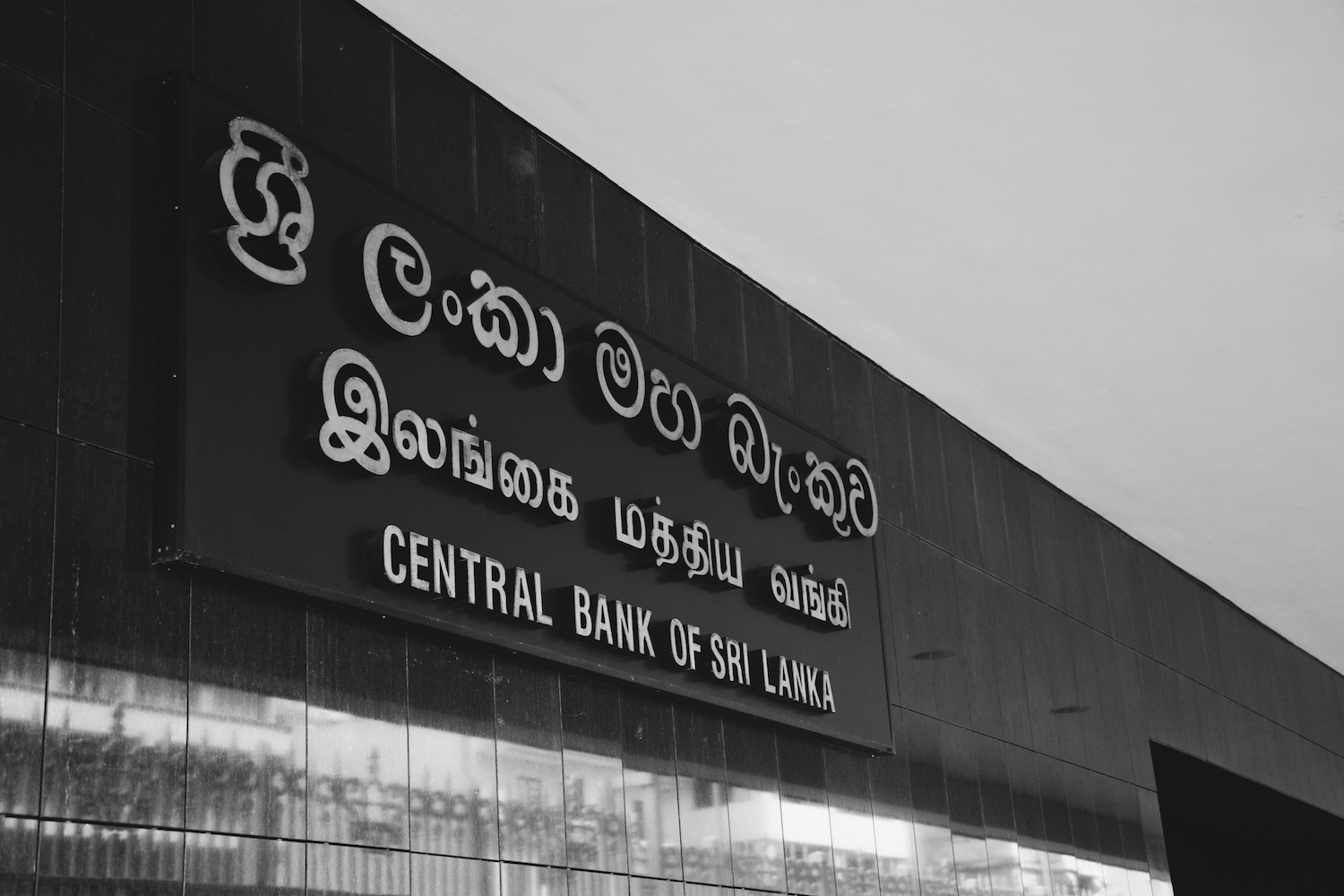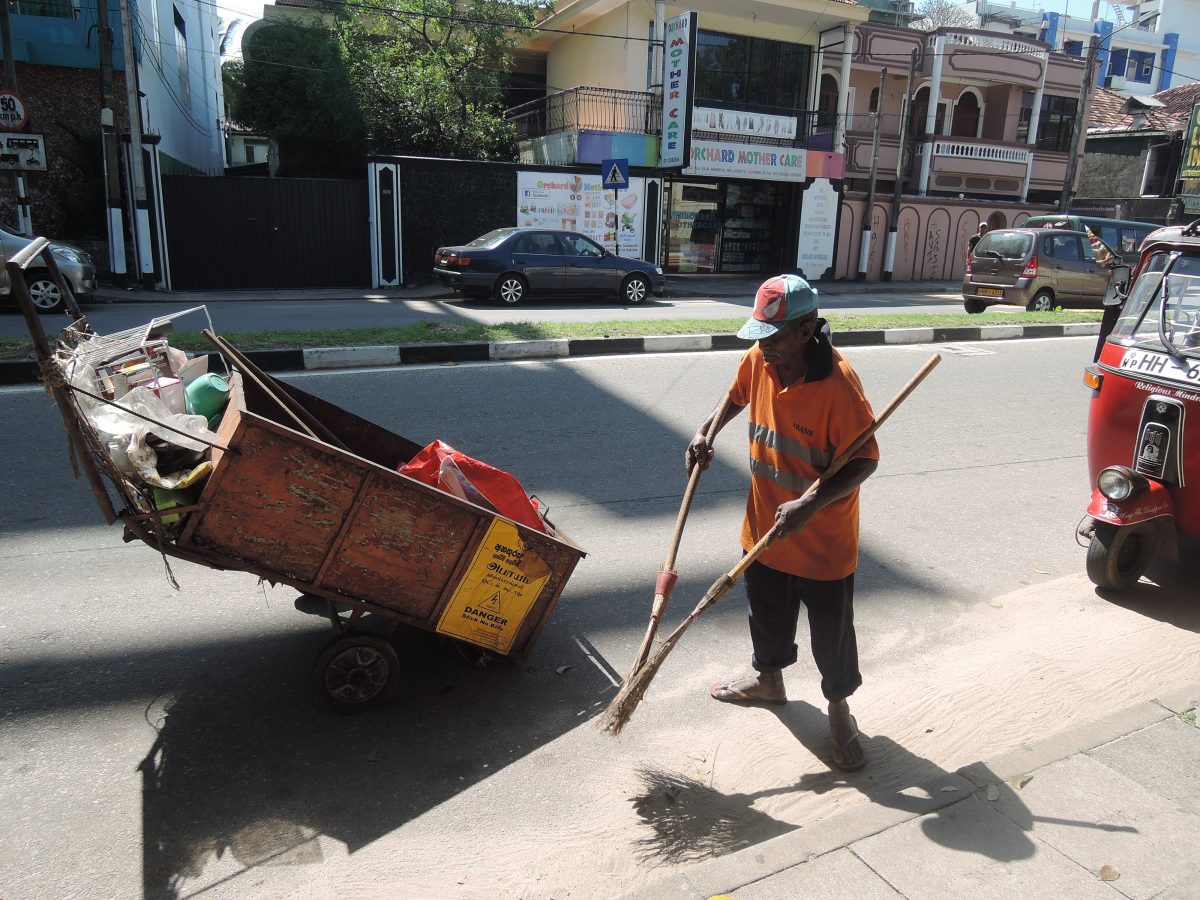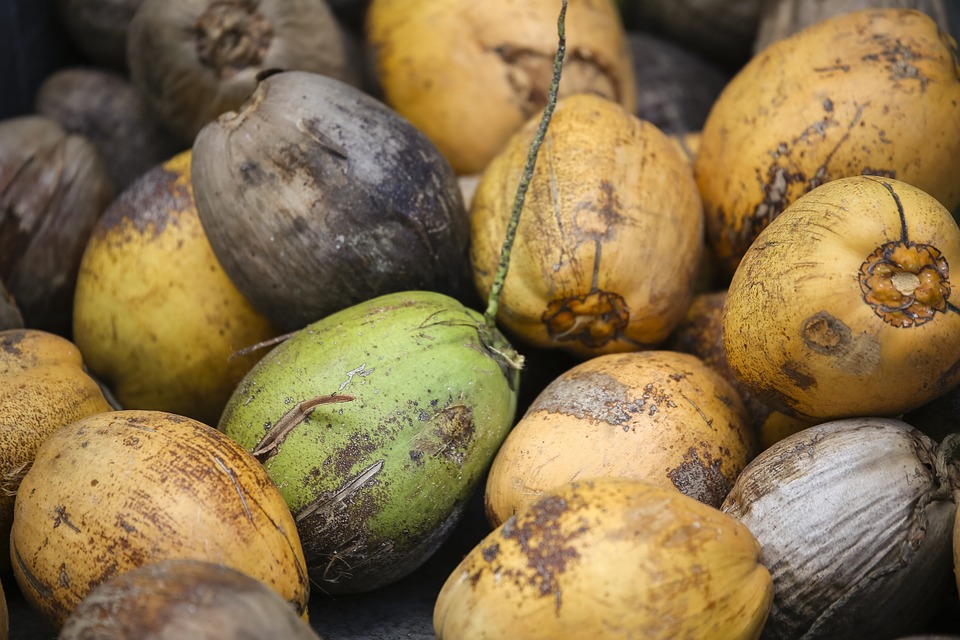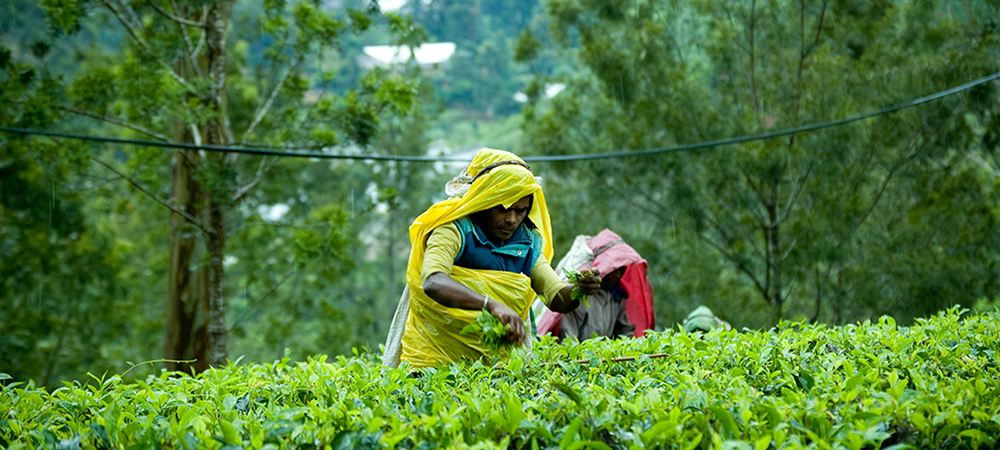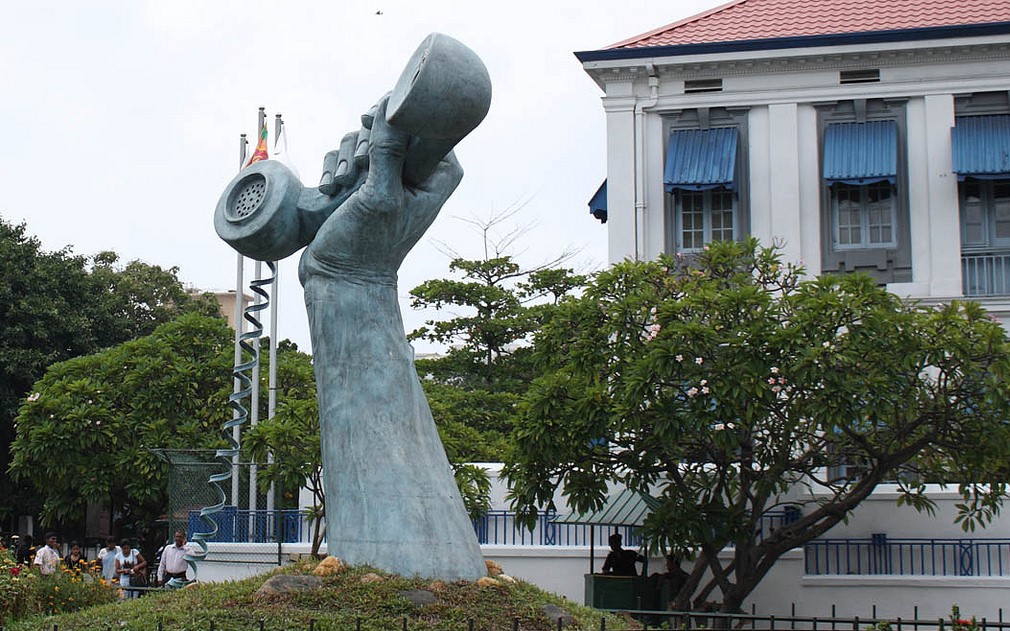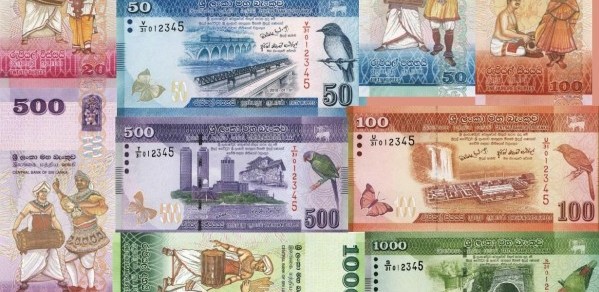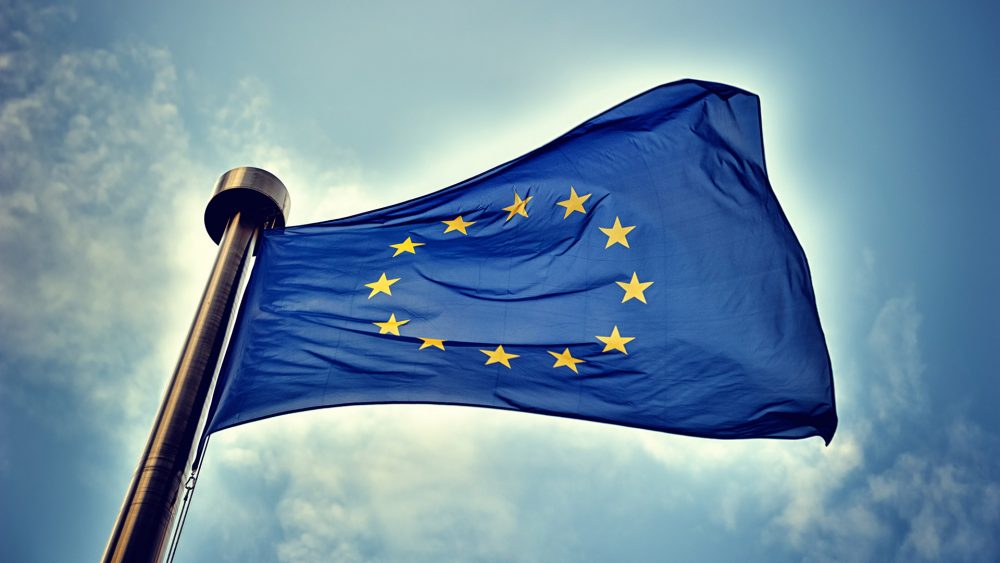
Now that the EU has lifted all sanctions on Sri Lankan exports of seafood, the island’s business community is gearing up for another big one ‒ the reinstatement of full GSP+ benefits.
Getting back GSP+ privileges is undoubtedly going to be a major win for the Government. The country’s exports could also perhaps pick up a little, which is going to be good news for Sri Lanka, and the country’s apparel sector in particular.
But what exactly is GSP+?
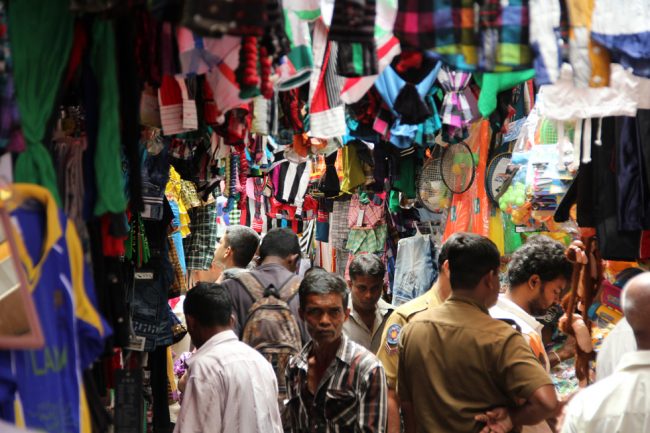
A busy street in the business hub of Pettah. The GSP+ scheme was conceived to help developing countries gain access to the EU market. Image credit: migrationology.com
GSP+ is short for Generalised Scheme of Preferences (Plus), which is intended to allow developing countries to pay less, or in some cases, no duties on their exports to the EU (don’t worry, we’ll clarify this down below). The scheme was conceived to help developing countries gain access to the EU market, thereby helping them to achieve economic growth.
How Does It Work?
Here’s what you ought to know. It’s not actually called GSP+. In reality, GSP+ is just one sub-scheme which falls under GSP.
This is how the entire scheme is structured:
GSP is applied on a selected range of products or product categories, and is divided into three sub-schemes: Standard/General (also referred to as just “GSP”), GSP+, and “Everything but Arms” or EBA.
According to the EU, the Standard scheme (GSP) offers tariff reductions, in partial or in full, for two-thirds of all product categories exported into the region.
The following countries currently benefit from the Standard arrangement.
- Africa: Botswana, Cameroon, Cote d’Ivoire, Republic of Congo, Kenya, Ghana, Namibia, Nauru, Nigeria, Swaziland
- Asia: Kyrgyzstan, India, Indonesia, Sri Lanka, Vietnam, Tajikistan, Turkmenistan, Uzbekistan
- Australia and Pacific: Cook Islands, Fiji, Marshall Islands, Micronesia (Federate States of), Niue, Tonga
- Europe: Ukraine
- Middle East: Iraq, Syria
- South America: Colombia, Honduras, Nicaragua
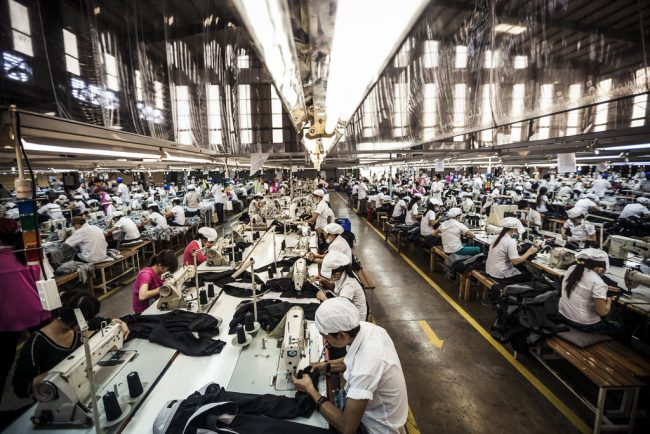
A factory floor, Vietnam. Image credit: ILO in the Asia and Pacific-Flickr
GSP+ on the other hand, will grant the full removal of tariffs on every product category covered by the general scheme. The catch is that to qualify for GSP+, exporting countries must abide by international conventions on human rights, labour rights, environment protection, and good governance.
According to this document, Pakistan is the only South Asian country to have GSP+ privileges, as of January 2016. The other countries which make use of the GSP+ scheme to export goods to the EU are: Armenia, Bolivia, Cape Verde, Costa Rica, Ecuador, Georgia, Mongolia, Paraguay and Peru.
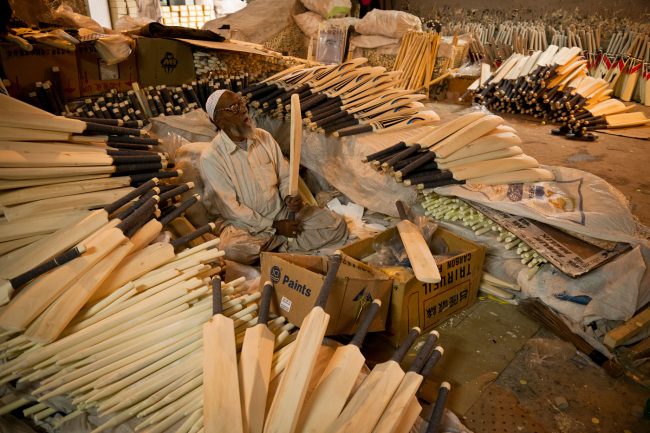
A worker makes a bat in a factory. Sialkot, Pakistan. Image credit: ESPN Cricinfo
And last comes “Everything but Arms” or EBA, which is only available to countries which are recognised by the EU as “Least Developed Countries” or LDCs. Under the EBA arrangement, LDCs get duty-free, quota-free access to the EU market for all products, except arms and ammunitions.
The countries which qualify for the EBA arrangement are as follows:
- Africa: Angola, Burkina Faso, Burundi, Benin, Chad, Democratic Republic of Congo, Central African (Republic), Djibouti, Eritrea, Ethiopia, Gambia, Guinea, Equatorial Guinea, Guinea-Bissau, Comoros Islands, Liberia, Lesotho, Madagascar, Mali, Mauritania, Malawi, Mozambique, Niger, Rwanda, Sierra Leone, Senegal, Somalia, South Sudan, Sudan, Sao Tome and Principe, Togo, Tanzania, Uganda, Zambia
- Asia: Afghanistan, Bangladesh, Bhutan, Cambodia, Lao (People’s Democratic Republic), Myanmar/Burma, Nepal, Timor-Leste, Yemen
- Australia and Pacific: Kiribati, Samoa, Solomon Islands, Tuvalu, Vanuatu
- Caribbean: Haiti
Since Sri Lanka’s access to the GSP+ scheme was suspended, the country had to make do with exporting under the Standard GSP scheme. In 2014 alone, Sri Lanka exported around EUR 1.12 billion worth of goods into the EU, by making use of the standard scheme. In percentage terms, that’s around 4% of all goods exported to the region via GSP.
That’s not all, though. Though first adopted by the EU in 1971, the original GSP scheme has gone through many reforms. The most recent reforms were adopted in 2012.

Members of the European Parliament take part in a voting session at the European Parliament in Strasbourg, Eastern France. Image credit: REUTERS/Vincent Kessler
Under the revised scheme, the goals of the GSP scheme were adjusted and made clearer. Now, the scheme comes with a few other bells and whistles, namely:
1. The EU mandates that GSP privileges should be concentrated on developing countries which need them the most. Accordingly, countries which fall into the categories below will not be granted GSP.
- Countries which have access to the EU market through another scheme as good as GSP, like a free trade agreement
- Countries which achieve a high, or upper-middle income on a per capita basis, as classified by the World Bank, for three consecutive years.
- Countries and territories which are either attached to the EU or are linked to another developed country.
2. GSP+ will now be used to strengthen trade incentives for countries which respect core human and labour rights, the environment, and good governance. In other words, good behaviour will be rewarded.
3.The EU will aim to increase the effectiveness of EBA concessions. This means reducing the number of GSP beneficiaries to help LDCs occupy a space in the market, thereby making trade concessions granted to LDCs more meaningful.
4. The new GSP scheme will last 10 years, as opposed to three, as it was earlier. Once the scheme runs out, a country can obviously apply for an extension. This doesn’t apply to the EBA, which does not expire.
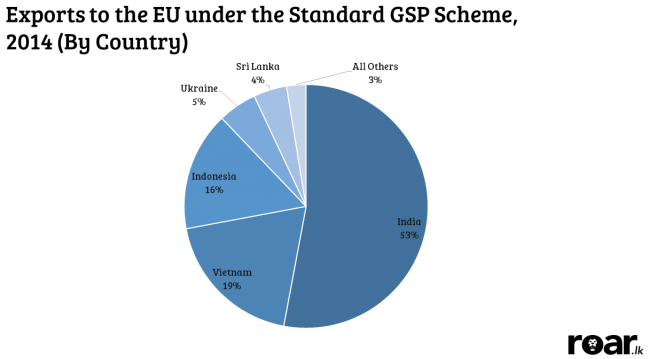
Exports to the EU under the standard GSP scheme, 2014
That’s GSP in a nutshell. There’s one more thing though: if the Sri Lankan Government manages to get GSP+ privileges restored, it will go a long way towards propping up business confidence in the country. It will also provide a much-needed dose of positive PR for the island’s Government, which has been struggling quite a lot to pass much-needed reforms.
Note: Those of you who have the ability to wade through pages of legalese can check out this and this, which is essentially the reformed GSP bill adopted by the EU in 2012.
Featured image courtesy: eteknix.com

